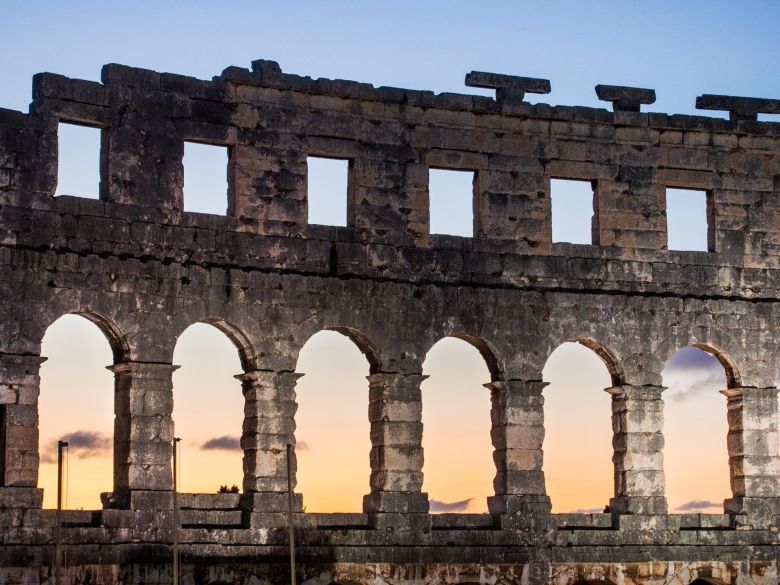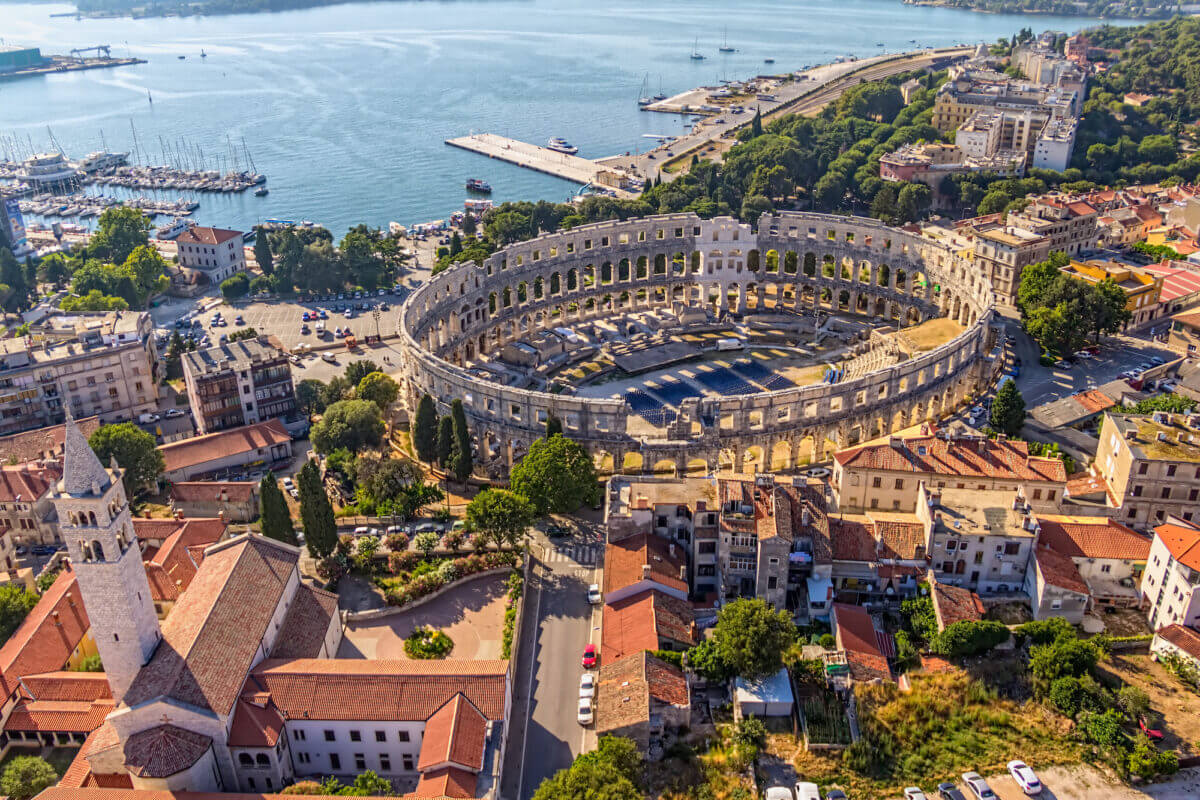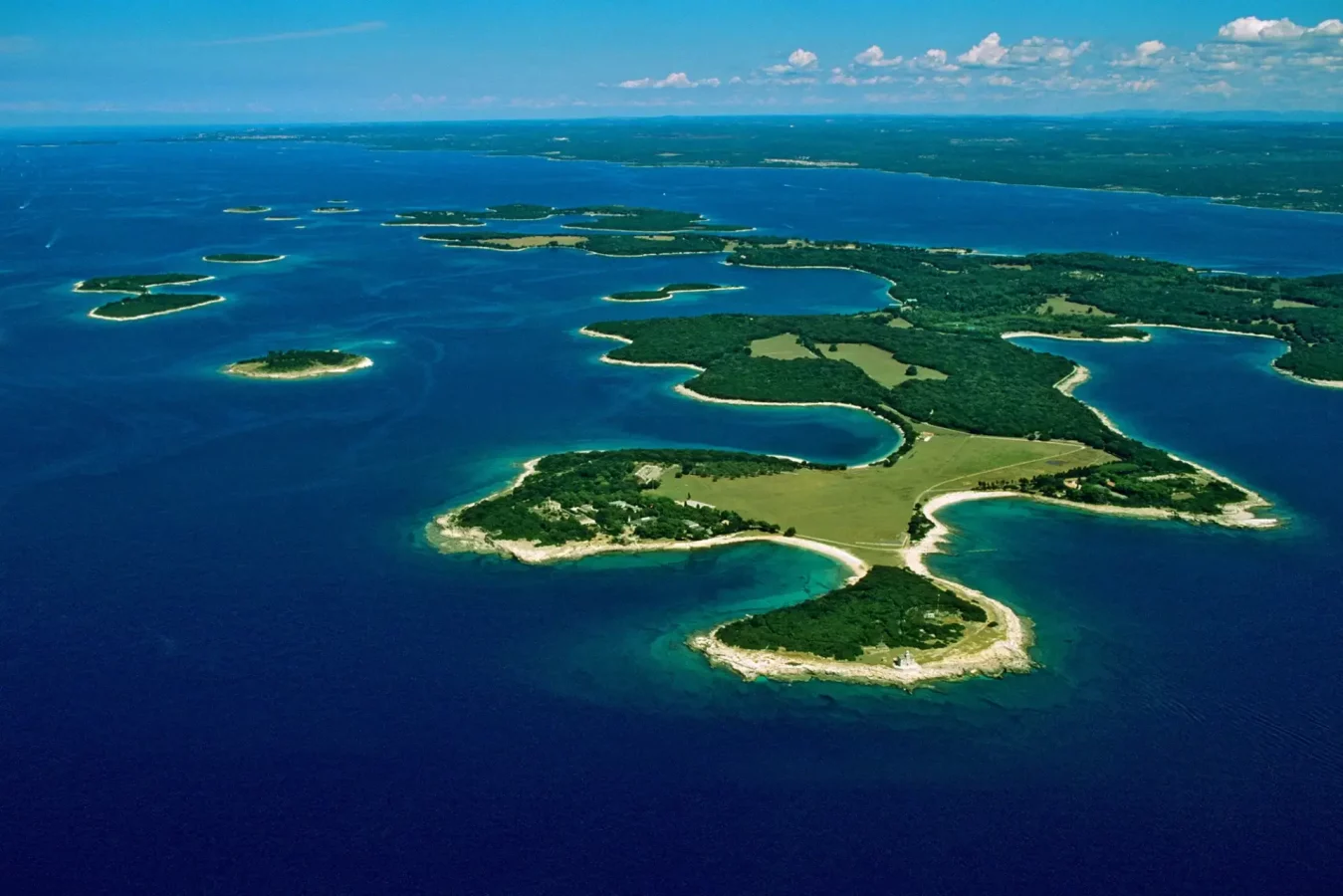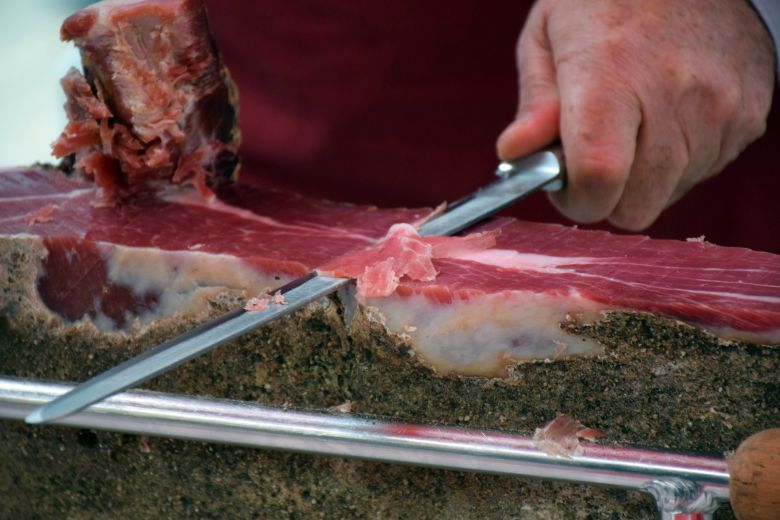About Pula
Pula, located on the southern tip of the Istrian peninsula is the largest city in the region and, along with Medulin, Poreč and Rovinj, has some of the best beaches in the entire region. It is a city of contrasts, as it has a wealth of historic sites and fine examples of Roman architecture but is also as urban as this region can be.
There are countless fantastic attractions to discover here. In this charming old town, you will find old temples, ancient buildings and regional markets, but the beautiful nature and the wonderful beaches around the city are also absolutely enchanting, making a beach holiday perfect.
The tourist infrastructure is excellent, with a variety of accommodation such as villas with pools or holiday homes offered by Villsy, but also good restaurants, bars, cafes, and hiking and cycling trails, so the city really offers something for everyone.
What is special about Pula?
The city's architecture is mainly Roman inspired, as this region was conquered by the Romans in the past. While many travelers visit the port city for its historical attractions, the city has slowly become a tourist hotspot as it offers unique and family-friendly activities without losing its local appeal.
The largest city in the region lies in the Valley of the Seven Hills and offers exceptional views of the Adriatic. And it's a real eye-catcher: narrow cobbled streets that suddenly end in front of magnificent Roman buildings - including a huge, spectacular amphitheater built for 20,000 spectators and is the only surviving Roman amphitheater in the world with a complete curtain wall.
This city is an extraordinary place for festivals: the main part takes place in the amphitheater, but there are also secret raves in tunnels, in a network of caves far beneath the city, as well as beach parties on the coast and boat parties off the coast. These are unbeatable parties that flex the city's rave muscles.

So here you can enjoy traditional Istrian cuisine, relax on one of the most beautiful beaches or make your trip more historical. There is something for everyone here, whether you are traveling alone or visiting with family. The beaches are pristine - unlike the busier southern parts of the country - and the sea is known for being calm and tranquil, meaning it's perfect for swimmers.
When is the best time to visit?
The port city is attractive all year round. The best time to arrive depends on your preferences. If you are traveling with your children, summer is the best time for you to travel. In addition to swimming and playing on the beach, there are many other entertainment options and fun, child-friendly day trips.
Although winter is usually mild and sunny with occasional rainy days, summer is more popular with tourists, but everyone can find something for themselves all year round. The windy spring is ideal for sailing fans. It is also a great time to exercise as the temperatures are not too high and the region offers plenty of opportunities to exercise.
For adult couples, the months of September and October are the best time as they are the most active. Usually there are few families with children, but also many active people who want to experience events and nightlife. As a rule, the hotels and restaurants are very busy during this time. In addition, the weather is great, it is not hot at all and the sea is warm.
Autumn and winter are more suitable for people who visit the city to explore the cultural heritage. The streets and monuments are not as crowded at this time of year, allowing you to fully experience the sights of the city's history.
What should you visit here?
There is so much to do in Pula that it is often overlooked by nearby cities. Don't skip this city and don't miss the amazing things to do here.
Explore the Croatian Colosseum
The Roman Arena is probably the largest of all the city's attractions and one of the most famous sights in Croatia. This impressive structure dates back to pre-Christian times and is one of the largest and best-preserved Roman amphitheaters in the world. It doesn't take much imagination to imagine the gladiator fights that took place in the amphitheater 2,000 years ago.

The arena is also used regularly and is the venue for several festivals and well-known concerts. But even without such an event, it is worth visiting the arena from the inside. The structure looks great from the outside, but that's nothing compared to what you find when you enter the place. You can walk through the ruins, sit in the spectator seats, or stand right in the middle of the arena to look around and imagine what the place must have looked like all those centuries ago.
Visit more ancient remains
Although the amphitheater is the most important ancient monument in the city, there are other remains from this period that rival those in Italy. There are three ancient city gates: the Arch of the Sergians, the Twin Gates and the Gate of Hercules. The most impressive is of course the Arch of the Sergians with its rich decorations and columns in the Corinthian style, but the other two gates are also not to be despised.
Another remnant from Roman times is the forum. It had all the elements of a typical Roman forum: temples dedicated to Roman gods, but also a temple dedicated to the Roman Emperor Augustus, and a temple to Diana. The forum was the main square of the city back then and still is today. The only temple that still stands today is the Temple of Augustus.
Take a trip to Brijuni
Brijuni National Park consists of 14 small islands located in the northern part of the Adriatic. The nature reserve is home to many historical sites from Roman times. If you take a day trip here, look out for dinosaur footprints scattered throughout the ancient sites.

Stay until sunset to catch a glimpse of dolphins swimming in the Adriatic Sea. Here you will also find a safari park with various animals that you can observe. Located about 14 km northwest of Pula, Brijuni National Park can be reached with a 15-minute boat ride from the town of Fažana.
Have a drink with James Joyce
Next to the Arch of the Sergians is the bar 'Ulysses'. The name of the place is no coincidence - the bar is dedicated to the famous Irish writer and author of 'Ulysses' - James Joyce. He spent a few months in this port city, where he worked as a teacher for the officers.
Today you can find his memorial in the same bar where Joyce mans one of the outdoor tables. You can sit next to him and have a drink with the famous writer.
Walk through the old town
The old town may not be as pretty and charming as that in nearby Rovinj, but it still has its charms. The picturesque streets invite you to stroll, and the higher you go in the old town, the quieter the place becomes. Don't just stick to the main pedestrian streets leading to the Forum, but turn right or left every now and then to get a better feel for the old town.
What food should you try when visiting?
Istria's turbulent past has left a clear mark on the cuisine - the influence of Italian, Central European and Slavic cuisine can also be felt in the restaurants, which offer a wide variety of dishes, including both seafood and interior dishes can try.
If you stay here, you should definitely try the truffles, one of the tastiest and most valuable types of mushrooms. Truffles can be prepared in different ways, but one of the best is certainly the combination with prosciutto and fuži, Istrian pasta made from homemade dough. The influence of Italian cuisine in this region is best felt in the different types of tasty pasta, such as gnocchi and fuži.
The perfect appetizer in the restaurant is the Istrian prosciutto, a true delicacy that is one of the most important brands in Istria. Istrian prosciutto is unique because of the way it is prepared and then dried in the cold wind bora. Unlike other types of prosciutto, the Istrian version is not smoked, but only dried in the wind.

At the end of the meal you will be offered simple but very tasty sweets, the most traditional and typical are kroštule, fritule and cukerančići. If you are served hung povetice (walnut roll) or peaches, be sure to try them.
In recent years, Istria has become the leading Croatian region for producing top quality wines. In the past, wine was simply divided into red and white, but today in wine shops you can taste Borgonja, Hrvatica and other noble varieties known all over the world such as Chardonnay, White Pinot and Cabernet Sauvignon. However, the most famous Istrian wines are Malvasia and Teran.
What can you do here with children?
The city has always been a popular heritage city due to the well-preserved buildings left behind by the Romans. This may have discouraged many families from visiting the city as it was not attractive to younger visitors. However, there are now numerous child-friendly activities here that attract travelers of all ages and show the city in a new light.
Besides relaxing on the beaches, for example the famous Ambrela Beach, not only in this city but also in nearby Medulin and visiting the aforementioned Brijuni National Park and its Safari Park, there are numerous other activities that you can do with your family can do:
Pula has a beautiful medieval center where some elements from Roman times can still be found, which is why it's a lot of fun to take a tour of the city with the family. The most famous attraction in the center is certainly the amphitheater.
You can also visit an aquarium with children here. The aquarium is not in the middle of the city, but it is right by the sea and you can also go to the beach near the aquarium. These two activities can be perfectly combined here. The aquarium is housed in an old fort that is home to many different fish, including Nemo fish, sharks and manta rays.
The Adventure Park is located on the edge of the forest near the Lungomare beach promenade. This outdoor park is suitable for adults and children aged 4 and over and offers 30 challenges, as well as an 80 meter long zip line. You can repeat the challenges as many times as you like. Everything is supervised by trained staff to ensure the safety of guests.
Aquapark Istralandia is known as Croatia's first water park, which opened in Nova Vas in 2014. One of the largest wave pools in the Mediterranean, many pools and other activities await you here. For your convenience, the water park also offers sun loungers, pavilions for the whole family and plenty of restaurants, cafes and relaxation options if you're not the adventurous type.
Why is renting a luxury villa here a good option?
Accommodation with pools in this port city is the ideal choice for those seeking relaxation and luxury through authentic traditional hospitality. As in any other town in Istria, hospitality, luxury and comfort are guaranteed in accommodation with pools and holiday homes. Croatia is a real magnet for tourists, and in the case of Istria, luxurious ones will lure you to the region, and wonderful tourist attractions, tasty dishes and stunning beaches will keep you here and keep you coming back again and again.